Our summer books roundup ranges from hefty tomes reimagining serious topics to artisanal reissues and digital publications celebrating the extra whimsical, with both historical and brand new works spanning photojournalism and the graphic novel, from the cheeky and utopian to the positively catty.
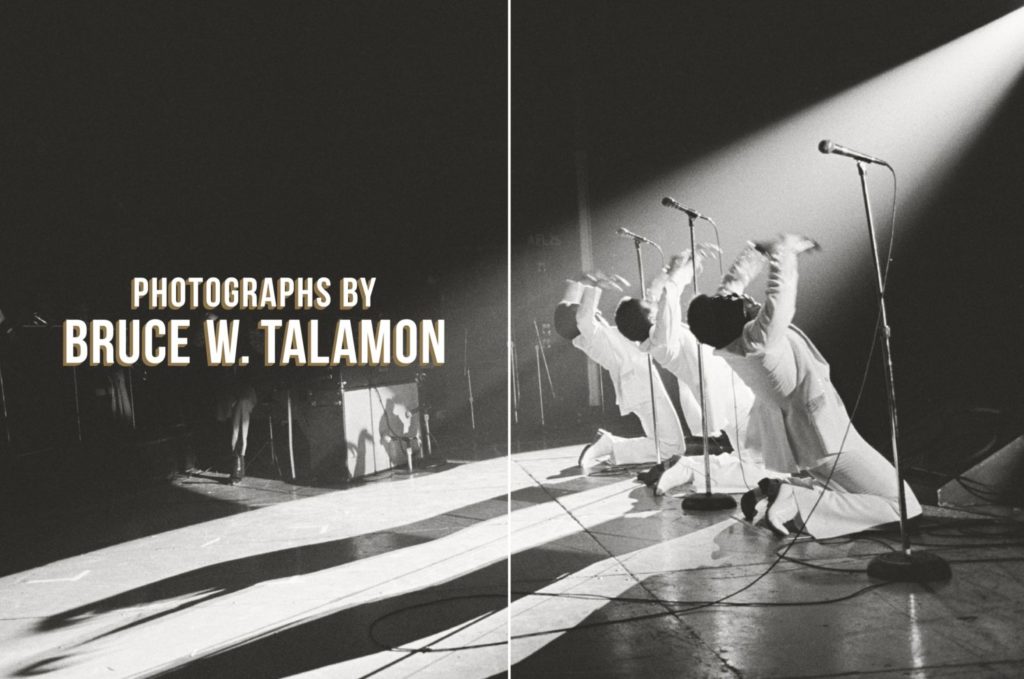
Soul, R&B and Funk: Photographs by Bruce Talamon (TASCHEN)
Soul. R&B. Funk. Photographs 1972-1982 (Bruce Talamon, Taschen)
Bruce Talamon’s inspired images of R&B royalty, taken during a visually spectacular era in black music history, finally get the Taschen treatment in Soul. R&B. Funk. Photographs 1972-1982. Companion text whispers backstories and context for the L.A. photographer’s coming of age, but luxurious prints do the talking. Talamon made glorious use of unfettered access, finding his groove and learning early, while taking his first concert photo — of Miles Davis — to “stay out of the way and don’t mess up the vibe.”
Talamon witnessed pivotal moments bridging soul and funk, and the birth of sounds still reverberating through pop music. L.A. is the most frequent backdrop — from the Coliseum and the Forum to long-lost Crenshaw hot spots, rehearsal and fitting studios — even Marvin Gaye’s mom’s house. Irresistible Al Green, dripping in powder blue, dropping roses for the ladies; moody silhouettes, as evocative as a full spread of Soul Train dancers strutting toward the camera. Queens get their due: Diana Ross a sequined deity of bygone elegance; raw, radiant Chaka Khan; Labelle’s wings and life on the road.
Amid perfect compositions of P-Funk and stage shots that vibrate off the page, it’s the quieter moments that may stir, like the sweetness in Sly Stone’s eyes, or a pensive James Brown at the keys. All of it will make you nostalgic for the ease, honesty and glamour of the ’70s, even if you never lived them.
Talamon doesn’t forget those who helped him break barriers, especially mentor Howard Bingham, with whom he shared a 44-year friendship. You can glimpse it, looking-glass style, in the juxtaposition of two images: Both center Isaac Hayes, feeling himself in a full-length gold chain robe. The first is Talamon’s shot; in the second, taken by Bingham, a young Talamon crouches at the foot of the stage, waiting to make his move.
Purchase the book at Eso Won in Leimert Park, or in their online store: esowonbookstore.com. —Beige Luciano-Adams
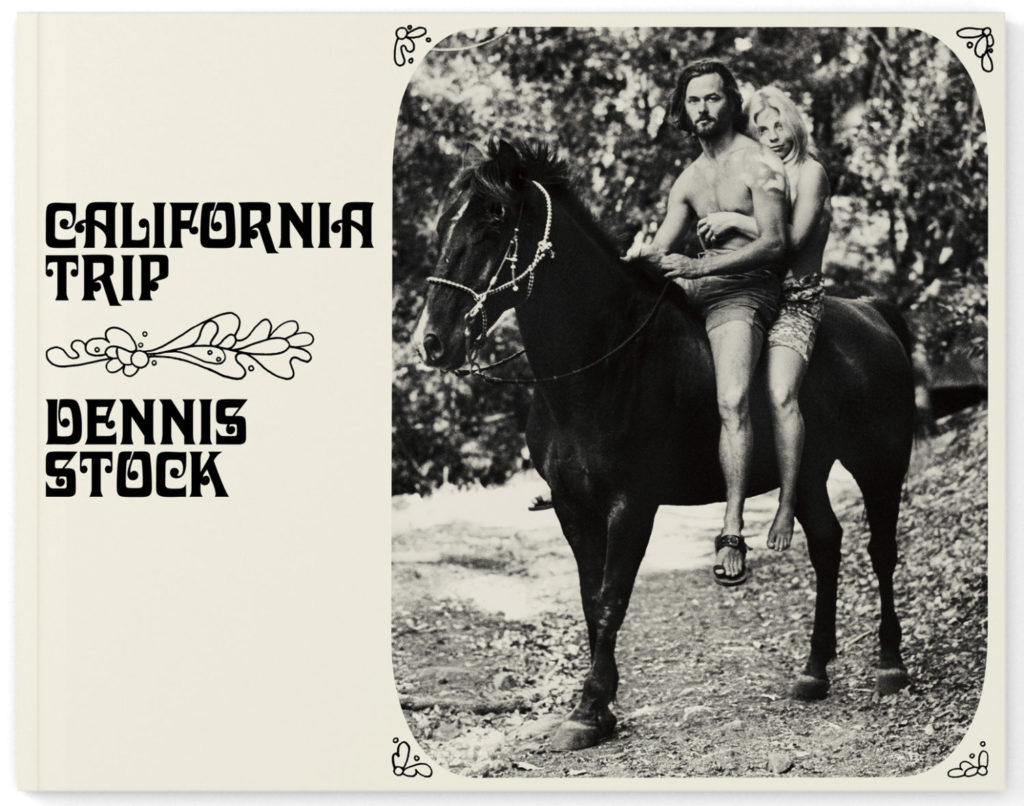
California Trip (Dennis Stock, Anthology Editions)
Photographer Dennis Stock’s 1970 masterpiece of Hippie-era romanticism gets a fresh incarnation in a new reissue of California Trip from Anthology Editions.
In 1968, Stock went on a classic American road trip, a journey to physically discover California. He’d been dropping in and out for 15 years by the time the proper assignment came down from the prestigious Magnum Agency to which he had long belonged. As he admits in the foreword to the first edition, the enormity of the everyday chaos of the California experiment had “scared” him, but off he went — like so many, one day he just sort of found himself there. Here.
“The state seemed unreal,” he wrote. “The people were constructing layers and dimensions of life that unsettled me. Surrealism is everywhere…”
His pictures embody the constantly shifting perceptual sands the defined the California he found along the coast in 1968. The plethora of paradoxes in plain view were abundant, not only in their totality but as each single image with itself contains multitudes, and presents a moment of juxtapositional energy that has the potential to throw the doors of perception wide open. No wonder he was scared. He called it the “Big Trip,” and it was. The book certainly is.
He found and photographed free-love forest dwellers on horseback, beachfront beauty queens, NASA-type radar situations, Randy’s Giant Donut somehow already present, pampered pooches, street art, big waves and surfers, impossible sunsets, endless highways, nudism, modernism, the Watts Towers, actors, anarchists, and gurus — all real and all here in black and white. Literally, though. The work was shot on film (of course) and at a time when both serious art and thoughtful documentary photography was still predominantly practiced in black and white. Not only would this have infused a certain historical gravitas into even the most ridiculous pictures at the time, but seeing them again in retrospect the aspect of strangeness is heightened, even as the imagery itself remains oddly familiar today.
anthology.net. —Shana Nys Dambrot
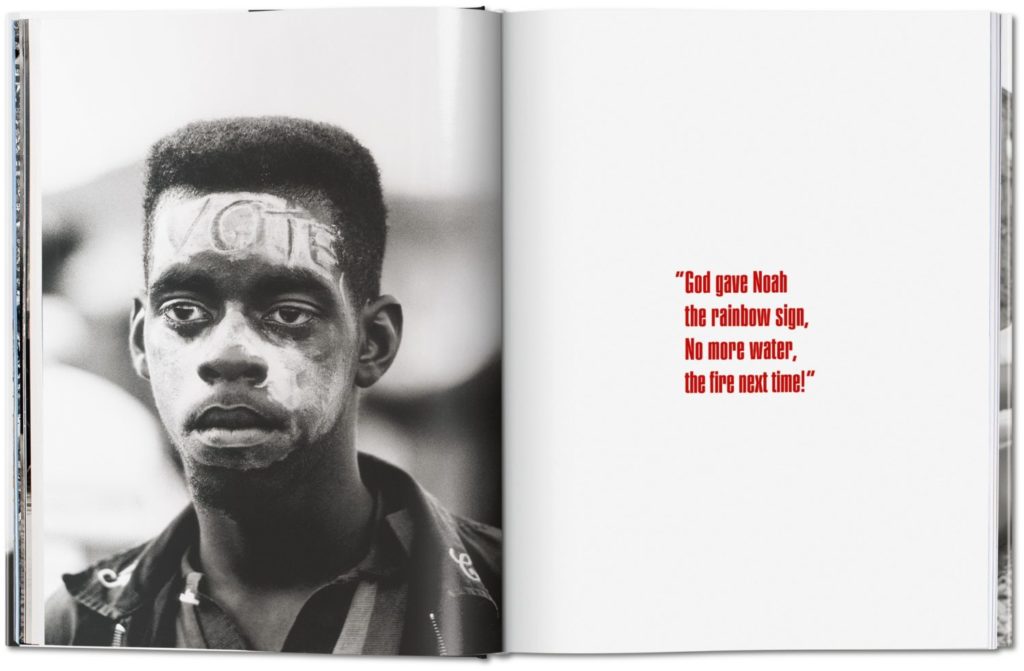
James Baldwin, The Fire Next Time, with Photography by Steve Schapiro (TASCHEN)
The Fire Next Time (James Baldwin, with photography by Steve Schapiro, TASCHEN)
This classic James Baldwin book, widely considered one of the best on race relations, is the gift that keeps giving, this time brought to life with over 100 photographs from the era. While several editions have been printed since the book first came out in 1963, and its legacy also inspired the recent The Fire This Time: A New Generation Speaks About Race, by Jesmyn Ward, this new treatment by TASCHEN as a popular edition, makes for an even richer read.
The book is composed of two independent essays, both in the form of letters, “My Dungeon Shook,” and “(To) My Nephew on the One Hundredth Anniversary of the Emancipation.”
Back in 1963, The New York Times Review of Books wrote, “[Baldwin] has fashioned his plea to America out of the past he has known, from the ferment of the present and the possibilities of the future.” Now we not only feel the pain of his eloquent words, but see it via Steve Schapiro’s stark, poetic photographs.
Some of the images by Schapiro were taken when he traveled with Baldwin for Life magazine in 1963. Others, taken over a couple of the following years, not only pair well with Baldwin’s prose, but they are some of the most prolific photographs of the Civil Rights movement we have. Many of them have become iconic, such as the image of a marcher from Selma to Montgomery in 1965 with the words “VOTE” scrawled across his forehead. No wonder his work is featured in the National African American Museum of History and Culture. The stylized manner of the book’s layout, often involving poignant two-page spreads, also allows us to absorb the text with the same defiant eloquence as its writer.
Find out more at TASCHEN’s website: taschen.com. —Wyatt Closs

Raver J (After Party Books)
Raver J. Comics (Janine Jordan, After Party Books)
There was once an L.A. woman who changed her life in radical ways — twice. Most recently when she and her husband, an EDM legend, retired to Central America to create and advocate a sustainable carbon-neutral lifestyle. But once, a long time before that, when she had a revelation and gave up capitalism for rave-induced utopianism. This is that story. Well, a crazy-pants far-out grown-up cartoon version of that story — and it’s a blast.
A graphic novel combining a luscious, hyper-stylized psychedelic futurist aesthetic with a simple but compelling hero’s journey to enlightenment, the first in the woman’s Raver J. comic book series, Save the Rave is the origin story of the Jivana Thoreau character, a kind of superhero whose powers come from, ultimately, the universe within her. Confronting both the greed and corruption of the corporate money swamp, while at the same time serendipitously exposed to the sparkly pagan love community of rave culture, Jivana comes to a crossroads, and magic ensues.
From the Raver J. art and activism platform, a previous novel is also available, as well as music and a slate of environmental justice actions connected to the central message of the books. That is the Raver J. creed, “Follow your heart, save the world.” Co-produced by Janine Jordan and High Concept Media Properties.
Available now from After Party Books, in digital form, and in print in 2020: raverj.com. —Shana Nys Dambrot
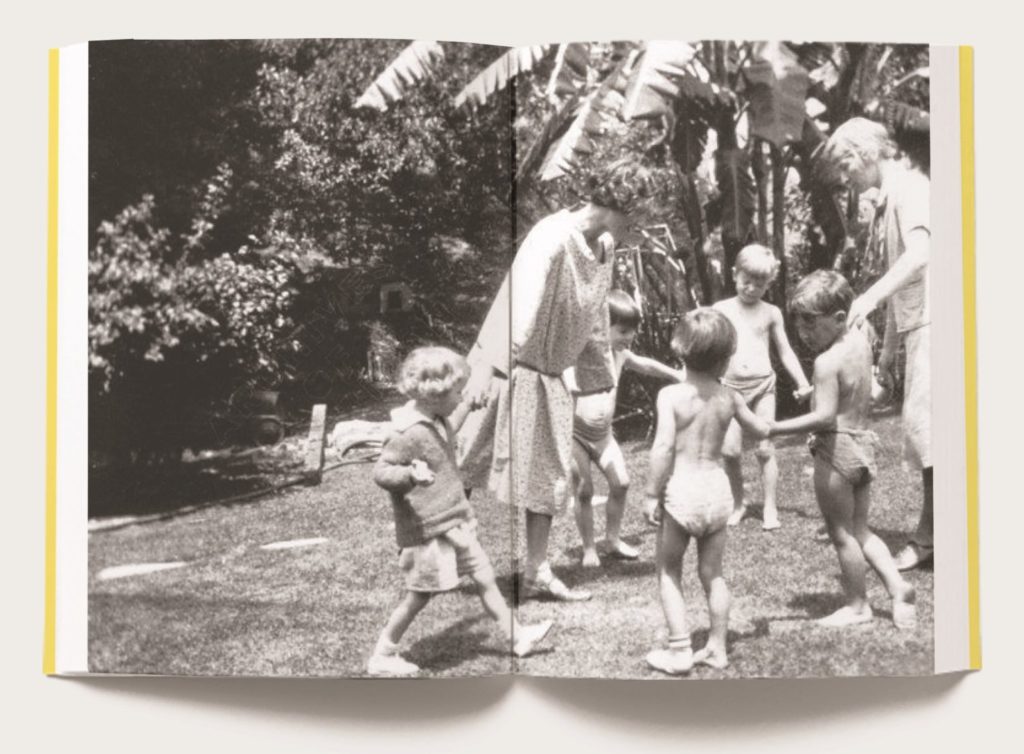
Sun Seekers: The Cure of California (Atelier Editions)
Sun Seekers: The Cure of California (Lyra Kilston, Atelier Editions)
The irresistible lure of California predates its mythic status as a destination for achieving fame and fortune in entertainment, technology, agribusiness or even the mining of “gold in them thar hills.” The earliest Spanish colonizers imagined this region to be preternaturally conducive to longevity, and starry-eyed health seekers began migrating here in waves around the middle of the 19th century. Succeeding generations have been drawn to bask in the local sunny climate not merely for the familiar promise of aesthetic or hedonistic gratification, but also in the hope of benefiting from its healing powers.
Los Angeles author Lyra Kilston’s Sun Seekers: The Cure of California is the second volume in publisher Atelier Editions’ lavish Illustrated America book series devoted to excavating this country’s eccentric cultural history. Prominent among these seekers profiled is the Austrian-born architect Richard Neutra, who spied a California tourism poster featuring the exotic image of a palm tree after World War I and spent the next few years achingly “dreaming of sun-drenched liberation.” The “raw-food architecture” style of Neutra’s early L.A. years, characterized by “the medicinal aura of a healthful, sun-trapping house,” evolved into the iconic Hollywood Hills “flat-roofed modern homes” with “walls of glass, turquoise pools, and austere patios.”
Less well remembered today is the German ur-hippie William Pester, who around the same time established a solitary Eden in the Palm Desert and became known as “The Hermit of Palm Canyon.” Among his spiritual descendants in the middle of the century were the long-bearded cadre of “Nature Boys” memorialized in Jack Kerouac’s On the Road, one of whom wrote a song about Pester that became a hit for Nat King Cole.
Fascinating and fun, Sun Seekers thoroughly chronicles the far-out history of California’s holistic-minded denizens and the lasting resonance of their quests for alternative modes of sustenance and environmental bliss.
Release by Atelier Editions: atelier-editions.com. —Lyle Zimskind
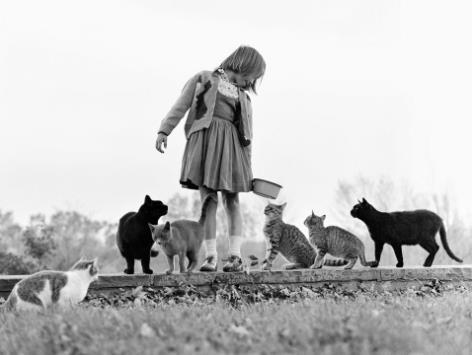
Walter Chandoha (TASCHEN)
Cats: Photographs 1948-2018 (Walter Chandoha, TASCHEN)
Is this giant book of cat pictures the book you didn’t know you always needed? Maybe, maybe not. But it’s a safe bet there’s someone in your life that will treasure it. Artist Walter Chandoha passed away in January of this year at the glorious nine-lives age of 98, but not before he oversaw production on Taschen’s definitive book of cat photography — anthologizing his own 60-year career as the king of feline portraiture.
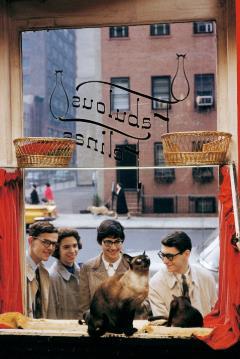
Walter Chandoha (TASCHEN)
Although his career predates the internet’s disturbing obsession with cat pictures by several decades, #catsofinstagram impresarios will recognize the flutter of delight on every page. But more than that, these pictures are frequently also quite beautiful. In truth, Chandoha was a talented and well-trained photographer who worked in advertising, portrait studio, newsroom, and wartime photojournalism before the appearance of a magical stray in 1949 New York City changed the course of his career forever.
There are children with their cats, gangs of roving toms, shop cats, magazine advertising cats, cats in midair leap, kittens in baskets, freaked out, yawning, eating, climbing, sleeping; interspecies friendships with ducks, rabbits and dogs. Across the decades textiles, palette fads, fashions, decor, and street scenes all tell a parallel story of decades of American popular taste. At times, moody and classic black and white portraiture alternates with candid ad colorful snaps. Alternately melancholy, whimsical, nostalgic and ridiculous, if you buy only one coffee table book of pretty kitties, make it this one.
Released by TASCHEN: taschen.com. —Shana Nys Dambrot
Advertising disclosure: We may receive compensation for some of the links in our stories. Thank you for supporting LA Weekly and our advertisers.

